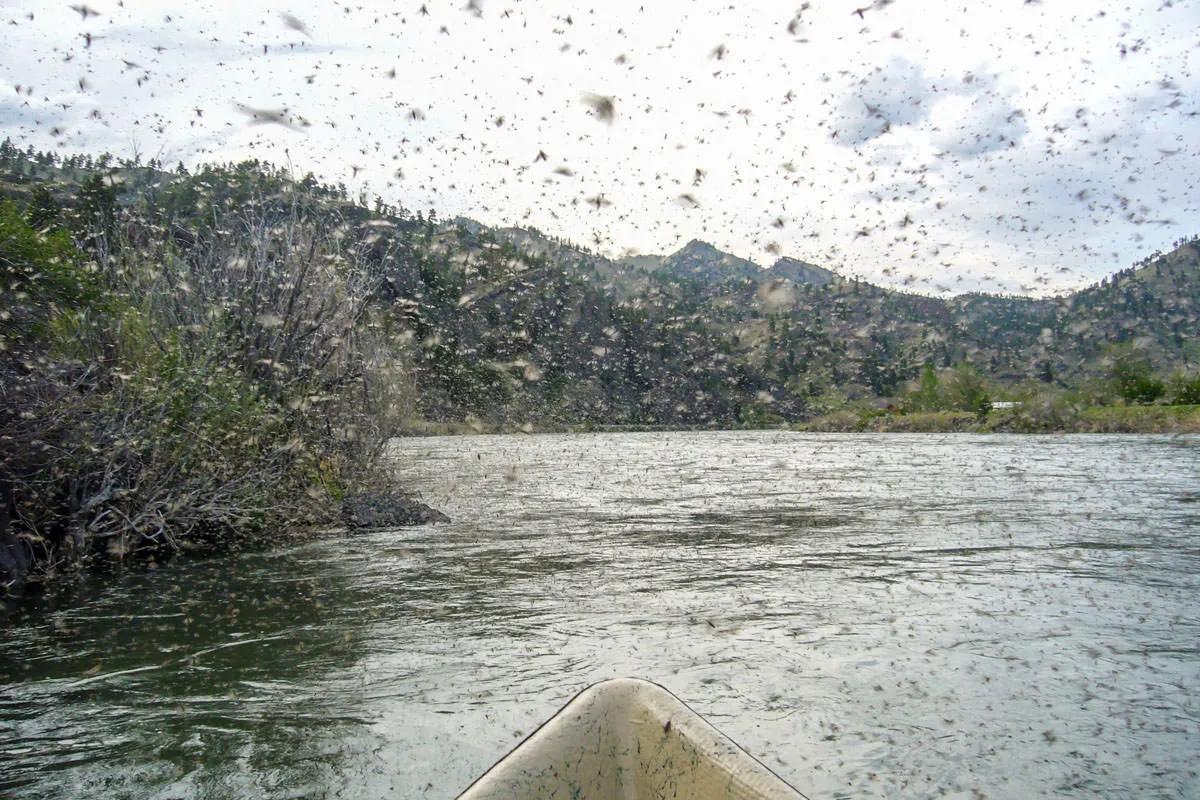
When we are first learning to fly fish the concept of the dead drift is constantly reinforced. It almost seems as if beginners are taught that trout won’t eat a fly unless it has zero drag on it and it’s drifting along perfectly with the current. Fortunately, not all insects just “dead drifting” along on the current and trout will actually eat flies that are deliberately dragged and twitched. It can actually provoke more action under the right circumstances.
Skating caddis patterns can make for some really exciting fishing on our Montana Rivers when the conditions are just right. By “skating” we’re referring to dragging the fly around on the surface, creating a little wake. A natural caddis would delicately skitter and bounce around on the surface while trying to break through the surface to dive down and lay eggs. Caddis typically hatch mid morning to mid afternoon, when water temps rise past a certain point. Their emergence is fairly quick, they’ll typically drift along the stream bed for a while and then will make a mad-dash for the surface and shed their pupal shuck and fly away fairly quickly. They’ll typically spend a few days around the bushes along the river and they will return to the water to lay eggs in the evenings once they’ve mated. This skating caddis technique typically works best during the last few hours of daylight during the summer months.

The technique for skating caddis is typically done with a shorter line and the rod held high. The angler casts across the current and slightly downstream (in the vicinity of splashy rising trout hopefully). As the fly drags across the current the angler gently shakes the elevated rod tip, giving the fly a slightly erratic skittering motion. The takes are generally quick and aggressive while skating caddis. The fish only get a quick shot at their meal, so they often will come cartwheeling completely out of the water while chasing egg laying caddis. The trout may react better to a different swing speed as well, if there are fish actively rising around you but they’re not interested in your offering try making the fly move across the surface faster or slower.
Certain flies excel at skating as they tend to stay on the surface while they’re under tension and dragging around on the surface. Flies that are heavily hackled and incorporate foam tend to work very well for skating. Elk hair wings are very buoyant and durable, which makes for a great caddis fly to skate. Another great skating pattern is the classic Goddard caddis. The spun deer hair body on the fly makes it very buoyant, even if it has caught a number of fish. It also helps to grease up your leader and fly, we want everything riding high on the surface of the water. As mentioned, this technique is typically done late in the day, when visibility may be a little low. Flies that have a bit of neon colored yarn incorporated in them can make them easier to track in the evenings. A few good looking caddis patterns for skating are below:

| 
|

| 
|
At Montana Angler we love teaching our guests new techniques, our guides are great teachers and would love the opportunity to share their knowledge of skating flies for trout with you. All of the rivers we fish offer great caddis hatches, shoot us an email or give us a call to set up a day of fly fishing with one of our guides here in Southwest Montana!

